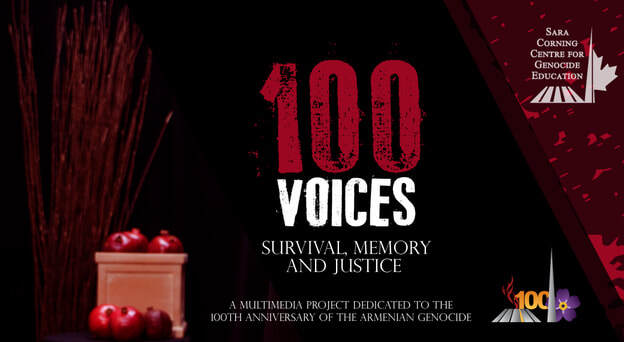- Published on
-
This booklet introduces readers to the concept of genocide, the Armenian Genocide, Canadian connections, and issues related to collective commemoration. It was created by Daniel Ohanian, Raffi Sarkissian, Aram Adjemian, and Prof. Isabel Kaprielian-Churchill. We have also developed a lesson plan to accompany it.
-
- Published on
Pages from Armenian-Canadian History is the Corning Centre’s first book-length publication. It brings together all known issues of Ararat Monthly and Արարատ ամսաթերթ, two newsletters published by the Georgetown Boys and their teacher Aris Alexanian in the 1920s.
The Georgetown Boys were a group of 110 genocide orphans brought to Canada starting in 1923. Led by Alexanian, they created the Ararats to practice their English and Armenian, to share their artwork and short stories, to spread news about life on their orphanage-farm, and to keep connected with Armenians around the world. The publication of Pages from Armenian-Canadian History was made possible by our work, over ten years, to gather the dispersed remnants of these newsletters from families, libraries, and archives in Canada, Armenia, Austria, France, and the United States. Originally mailed to 2,000 people in more than thirty countries, the Ararats are once more available to readers all around the world!
To buy the book in hard copy, search “Pages from Armenian-Canadian History” on your country’s Amazon site:
-
- Published on
The Armenian Genocide Reparations Study Group had four members: professors Henry Theriault, Alfred de Zayas, and Jermaine McCalpin and Ara Papian. In 2015, the group published a book called Resolution with Justice: Reparations for the Armenian Genocide. This file is their 10-page summary.
-
- Published on
This long essay by Professor Uğur Üngör is the best overview of the Armenian Genocide of this length. It explains why and how the genocide happened and what its legacies are. The text is too advanced for most high-school students, but it’s appropriate for teachers. It does an exceptional job of explaining these events from multiple points of view.
-
- Published on
This is a Microsoft Excel database created by our director of research Daniel Ohanian. It lists approximately 130 boys and 40 girls and women who came to Canada as humanitarian refugees between 1923 and 1930. They’re referred to as the Georgetown Boys, Georgetown Girls, Fegan’s Boys, Salvation Army Boys, and Newham Boys. The database includes leads where more information about each person can be found.
-
- Published on
100 Voices was a project launched in 2015 for the centennial of the Armenian Genocide. It was completed in partnership with senior students and teachers at ARS Armenian Private School in Toronto. It explored the themes of memory, amnesia, survival and justice with 100 people of Armenian descent. The videos coming out of the project have been published online.
Click here to watch the trailer
